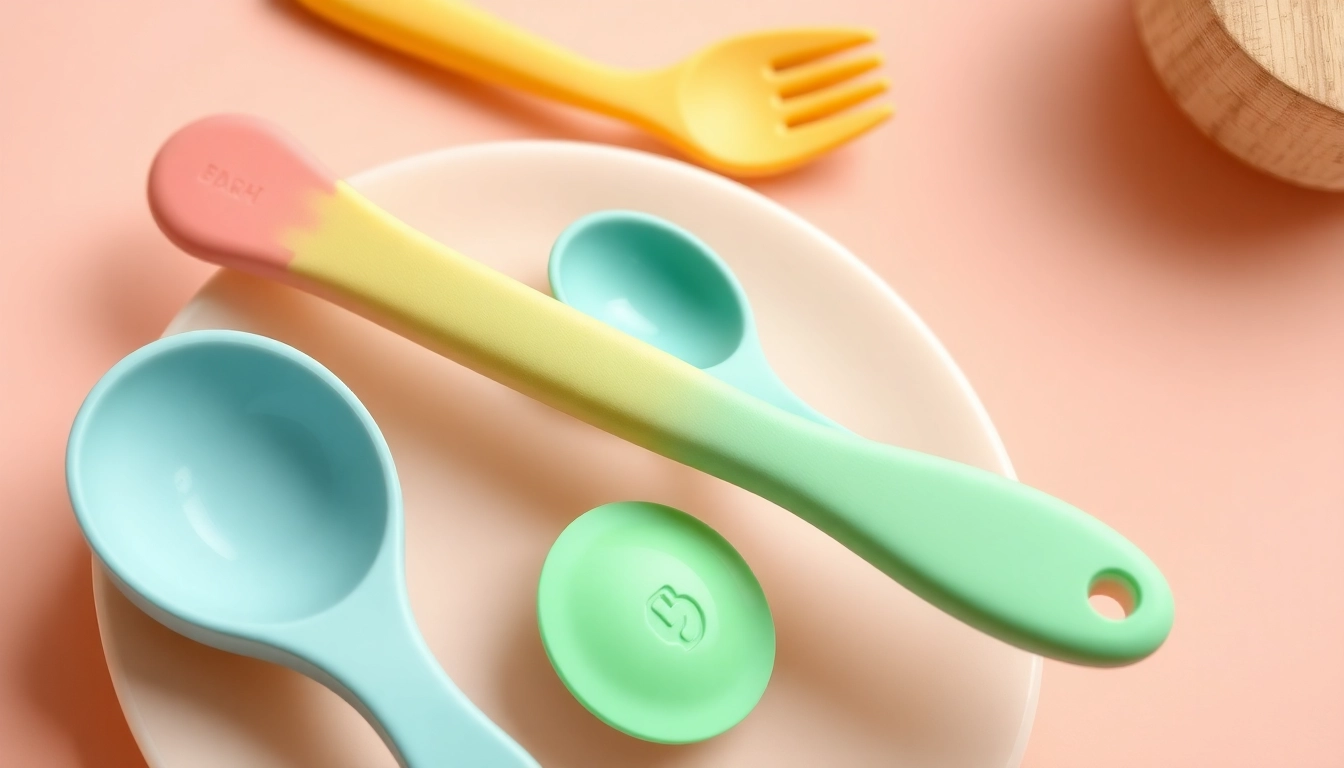Understanding the Importance of a Baby Feeding Set for Weaning
Introducing solid foods marks a pivotal moment in a child’s growth and development, transitioning them from exclusive milk feeding to exploring a variety of nutritious foods. This period, known as weaning, requires careful planning and appropriate tools to ensure a smooth and positive experience. One essential component that significantly influences this phase is the baby feeding set for weaning. These thoughtfully designed sets foster self-feeding, promote motor skills, and instill healthy eating habits from an early age. Understanding why choosing the right feeding set matters can make the difference in supporting your child’s growth, independence, and overall well-being.
Why choosing the right feeding set matters
A carefully selected baby feeding set provides more than just utensils; it becomes an essential aid in encouraging autonomy, safety, and nutritional awareness. When parents choose appropriately designed feeding accessories, they create an environment conducive to learning self-feeding skills, which are fundamental for independence and confidence. Moreover, the right set minimizes mess and ensures safety, reducing hazards such as choking or ingestion of harmful substances. The importance of opting for high-quality, certified materials—such as food-grade silicone—cannot be overstated, as it guarantees safety and hygiene, crucial during a child’s sensitive developmental phases.
In addition, choosing a versatile and durable feeding set helps sustain the child’s interest in meals, making the eating experience more enjoyable and less stressful for parents. It also aligns with contemporary trends towards eco-friendly, sustainable products that support environmental responsibility while safeguarding your child’s health.
Key components of a complete baby feeding set
A comprehensive baby feeding set ideally includes several essential components tailored to the different stages of weaning:
- Plates with multiple compartments—to separate different food groups, encouraging balanced nutrition and visual appeal.
- Bowls with suction bases—to prevent tipping and spills, fostering stability during self-feeding.
- Utensils such as spoons and forks—ergonomically designed for small hands, facilitating the development of fine motor skills.
- Specialized accessories like divider plates—to introduce variety while keeping meals organized.
- Self-feeding aids, including suction bowls and ergonomic utensils—to promote independence and confidence in eating tasks.
High-quality kits also feature modular and easy-to-clean designs made of durable, BPA-free silicone and eco-friendly materials, ensuring safety and longevity. Many innovative sets include removable components and vibrant colors that stimulate sensory development and engagement.
Benefits of using silicone and eco-friendly materials
Silicone has become the material of choice for many baby feeding accessories due to its outstanding safety, flexibility, and durability. Certified food-grade silicone is hypoallergenic, free from BPA, phthalates, and other toxic substances, making it safe for contact with children’s food and skin.
Benefits include:
- Safety and hygiene: Silicone resists staining, odor, and bacteria buildup, simplifying cleaning and maintaining sanitary conditions.
- Flexibility and break resistance: Unlike ceramics or glass, silicone is resistant to impacts and drops, reducing breakage hazards.
- Temperature resistance: Silicone can withstand high and low temperatures, making it suitable for microwave and freezer use.
- Sustainability: Silicone is a long-lasting material, promoting environmental responsibility and reducing waste associated with disposable products.
- Design versatility: Available in various colors and shapes, silicone accessories are visually stimulating and attractive to children, encouraging their participation at mealtime.
Investing in eco-friendly and certified materials aligns with the values of health-conscious families, ensuring that every meal promotes safety, sustainability, and well-being.
Features to Look for in a Baby Feeding Set for Weaning
Design that promotes early motor skills
Ergonomic design features, such as textured handles and smaller utensil sizes, are crucial in supporting the development of fine motor skills. Products like posatine ergonomiche (ergonomic spoons) stimulate hand-to-mouth coordination, essential for self-feeding. Additionally, features like non-slip bases, such as ventosa (suction) cups on bowls, provide stability, encouraging children to practice independent eating without frustration or spills.
Safety standards and certifications to ensure peace of mind
Always select products certified by relevant safety standards—look for CE marking, BPA-free, and TÜV certifications. These attest that the materials and manufacturing processes comply with strict safety regulations, safeguarding your child’s health. Non-toxic, hypoallergenic, and free from harmful chemicals should be non-negotiable features.
Practicality and ease of cleaning
Ease of cleaning is essential to maintain hygiene. Opt for products that are dishwasher safe, have smooth surfaces without hard-to-reach crevices, and are resistant to staining. Multi-component sets should be easy to assemble and disassemble for thorough cleaning, and compact enough for storage, ensuring parents’ convenience during busy schedules.
How to Use a Baby Feeding Set for Weaning Effectively
Introducing the set gradually to your child
Begin by familiarizing your child with the new utensils and dishes during calm, positive mealtime environments. Demonstrate usage and incorporate play to reduce any apprehension. Use the set consistently, allowing the child to explore and become comfortable with the textures, shapes, and functions of each piece.
Combining with nutritious meal options
Pair the feeding set with wholesome, balanced meals rich in fruits, vegetables, proteins, and grains. The visual appeal of colorful, well-organized plates can stimulate appetite and interest in trying new foods. Incorporate different textures and flavors to promote sensory development and adapt to the child’s evolving preferences.
Tips for encouraging self-feeding and independence
Create a supportive environment by giving your child plenty of space to practice. Praise their efforts, even if messy, to build confidence. Use utensils that are easy to grip and handle, such as silicone spoons and forks with ergonomic features. Consistency and patience are key; gradually reduce parental assistance as confidence and skills improve.
Tips for Maintaining and Caring for Baby Feeding Sets
Proper cleaning and hygiene practices
Regular cleaning with warm soapy water or placing items in the dishwasher ensures hygienic conditions. Check manufacturer guidelines for sterilization procedures. Avoid abrasive cleaners that could damage silicone or other materials. Periodically inspect for signs of wear or damage, replacing parts as necessary to maintain safety.
Storage solutions to prolong product life
Store feeding accessories in a clean, dry place away from direct sunlight or extreme temperatures. Using dedicated containers or drawer organizers prevents dirt accumulation and ensures easy access during mealtimes.
Signs when it’s time to replace or upgrade
Replace items showing cracks, discoloration, or degraded silicone. If utensils become difficult to clean thoroughly or lose their grip-on features, consider upgrading. Regularly assessing your child’s developmental needs and preferences will guide the selection of more suitable and engaging utensils.
Real-Life Success Stories and Recommendations
Parents’ experiences with baby feeding sets for weaning
Many parents report that using thoughtfully designed silicone feeding sets significantly reduces mealtime stress and mess. For instance, parents who transitioned their children to self-feeding with colorful, textured utensils observed marked improvements in motor skills and eating habits. Testimonials highlight that safety features like suction bases foster independence and confidence during meals.
Expert advice on selecting and using feeding accessories
Child nutritionists and pediatricians emphasize the importance of choosing certified, non-toxic, and ergonomic products. They recommend starting with simple, durable sets, gradually introducing more complex utensils as the child develops. Patience, positive reinforcement, and routine are key factors in successful weaning.
Innovative products shaping the future of infant nutrition
New developments in infant feeding accessories focus on multifunctionality and sensory engagement. Features such as textured surfaces for gum relief, modular components for customization, and embedded technology to monitor intake are emerging. These innovations aim to streamline the transition to independence while maintaining safety and nutritional integrity.





